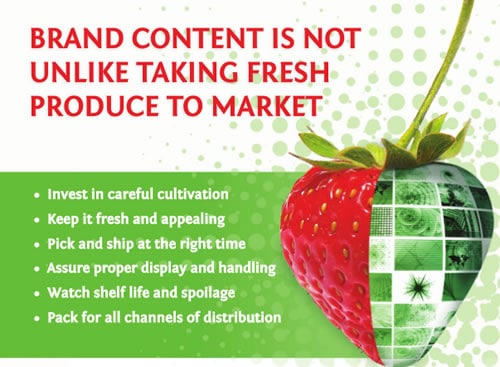 Content can serve many goals but customer engagement is always at least an intermediate goal in developing a content plan (a.k.a. “strategy”). Content for customer engagement is about being relevant – which can mean many things as you’ll read below – and responding to needs. It means providing value. It means utterly focusing on the wants, emotions, likes and behavior of your focus audience, the content marketer’s term for the people you would like to interact and do business with in the end.
Content can serve many goals but customer engagement is always at least an intermediate goal in developing a content plan (a.k.a. “strategy”). Content for customer engagement is about being relevant – which can mean many things as you’ll read below – and responding to needs. It means providing value. It means utterly focusing on the wants, emotions, likes and behavior of your focus audience, the content marketer’s term for the people you would like to interact and do business with in the end.
An ‘engaging’ content (marketing) strategy is not about the content you think you need to have. It is about the content you need to have in order to engage the people you would love to engage by knowing what they want. It’s about enabling people to fulfil a task they have, whatever it may be at any given time.
Whether it concerns content production or other aspects of your content strategy: customer engagement always depends on the “customer-centric” value of the content you provide. The usefulness. And you don’t define that: the customer, in the broadest sense, does. Combine this with the simple fact that relevance drives consumption and is the essential attribute marketers must deliver in order to be successful in content marketing and the conclusion is clear.
Peer advice, affinity networks, circles of trust, consistency, a touchpount-based approach and a strategic advocacy agenda are crucial when defining an effective and engaging content marketing program.
The many faces of customer engagement

Of course, engagement as a term is rather vague but it means what it means: and has always meant from the customer engagement perspective as Richard Sedley, a speaker at one of our events once described it in an interview with another speaker, Dave Chaffey: “strengthen the emotional, psychological or physical investment a customer has in a brand“. What better way to do that than being useful?.
Many marketers look at engagement as getting others to act. In the end it is. But to me, that action isn’t clicking or buying etc. alone. That’s the measurable stuff. Engagement is also about providing experiences and answers to questions and needs, still the primary task of content. When you solve someone’s questions or simply deliver what they expect and need across their journey or on your website, you also engage them as they get what they want. Also measurable but not directly.
A content strategy, as a consistent plan to offer great customer experiences using content, obviously starts with understanding the essential informational needs of so-called target audiences. Think about the core content people need to find on your website, for instance. However, it goes further than that. Content plays a role in all stages of the proverbial funnel and as we’ll keep repeating can fulfil a huge number of business and marketing goals or better: help fulfil them in an integrated and customer-centric way, before, during and after the buy. The need to engage through relevance goes for virtually all potential content marketing goals. Think about branding, for instance. You build emotional connections, you appeal or in other words: you engage here as well. The list goes on.
In a whitepaper, ‘Authority leadership marketing’, GlobalFluency, provides some extra tips about how to make content the cornerstone of customer engagement. Listening and relevance play an essential role in using content for customer engagement in it indeed. GlobalFluency uses cases of a few leading B2B firms, including Intel and Symantec, to illustrate the importance of relevant content for customer engagement. They are all B2B companies that seek to connect and engage with their markets using more relevant content delivered in digital formats and channels. The key to that relevance? Indeed, customer-oriented content.
Boosting content marketing ROI: stay away from pure self-serving messages
Customer-centricity and relevance go hand-in-hand and are essential characteristics of content for customer engagement. To become knowledge brokers and use content in an insightful way to build rapport with target audiences, businesses must pay more attention to content marketing performance. The goal is to create strategic conversations with decision makers and influencers to acquire leads, build trust and shorten selling cycles. If the content doesn’t engage (so, you need to measure and set goals, other obvious parts of a content strategy), there isn’t much sense in having it.
Content marketing ROI is based on these and other outcomes. As interesting content is one of the top three reasons people follow brands on social media and an essential driver of engagement, it should not focus on self-serving messages. Relevance is king because customer and context trump content as such.


